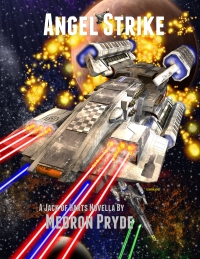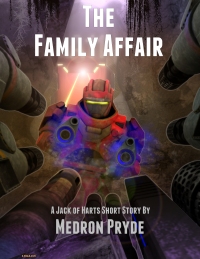When Germany finally accepted defeat and surrendered to the Allies, the German-Russian peace treaty was declared void. Russia quickly moved to retake the lost regions, but the locals preferred independence and fought back. Now known as the Russian Civil War, it waged for five years, killed millions of people, and destroyed their economy. It birthed the Soviet Union, and while that nation would not survive the century, its legacy continues to this day.
The “cheap toys” we brought back from Betelgeuse is how we learned the Thunderbird’s secret of course. In examining the tech, we realized it had the same base as the tech the Peloran use. Two thousand years of divergence of course, but that tech is real unique. Once you know what to look for, it’s impossible to hide. The Thunderbirds and the Peloran got their tech from the same source. The Albion. It was easy to figure out the truth after that.
Dixie and her students saw most of their service around El Paso, Del Rio, Laredo, and the Borderplex. Those border cities had large Texas Tech satellite campuses and she defended them with zeal. Season Two was filmed onsite on and around the Laredo campus and was billed as being based on the real life fighting there. The new co-star and love interest was based on several real Texas Guard liaisons who helped her, though the liaison itself was decidedly fictional.
When the Russian Duma attempted to continue fighting the Germans in hopes of regaining lost territory, Vladimir Lenin led the Bolsheviks to overthrow the Provisional Government entirely. The new government signed a peace treaty with Germany, renouncing all Russian claims to the border regions between Western Europe and Russia, the Baltic States, Finland, Ukraine, and Poland. But Russia would never truly accept those regions as lost.
There was a lot of bluffing involved in our Contact mission at Betelgeuse. The birds saw our ship deftly evade almost all of their weapons fire. We never fired back so they didn’t see our weapons in action. Thank God. If they’d seen that scout ship’s weapons in action they might have realized that they actually had a better tech base than we did. They never thought twice about all the “cheap toys” our team picked up on planet. For cultural study of course.
 The Martian Affair on Amazon
The Martian Affair on Amazon Forge of War on Amazon
Forge of War on Amazon The Audacious Affair on Amazon
The Audacious Affair on Amazon Angel Flight on Amazon
Angel Flight on Amazon Angel Strike on Amazon
Angel Strike on Amazon Angel War on Amazon
Angel War on Amazon The Family Affair on Amazon
The Family Affair on Amazon The Thunderbird Affair on Amazon
The Thunderbird Affair on Amazon Wolfenheim Rising on Amazon
Wolfenheim Rising on Amazon Wolfenheim Emergent on Amazon
Wolfenheim Emergent on Amazon The Gemini Affair on Amazon
The Gemini Affair on Amazon